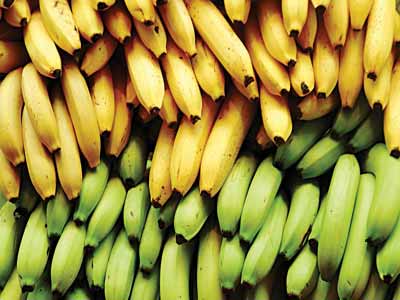SCIENTISTS have made a ‘wonder drug’ out of bananas that can kill off a wide range of viruses – including hepatitis C, flu and Human Immuno-deficiency Virus (HIV) that causes Acquired Immune Deficiency Syndrome (AIDS).
According to the study published in Cell, it is hoped the new medicine will become a vital ‘broad spectrum anti-viral’ that could protect humanity from some of the most vicious diseases.
The key ingredient is a protein found in bananas called banana lectin, or ‘BanLec’. It was first discovered five years ago – and considered as a potential AIDS treatment. But it caused nasty side effects that scientists have now overcome.
The earlier research reported in the Journal of Biological Chemistry, in 2010, found that the lectin found in bananas can inhibit HIV infection by blocking the virus’s entry into the body. BanLec acts on the protein ‘envelope’ that encloses HIV’s genetic material.
Now, scientists have created a new version of BanLec, which can fight viruses in mice – but does not cause unwanted irritation and inflammation.
BanLec works by clinging to sugar molecules found on the surface of some of the world’s deadliest viruses. Once the drug has locked on to the virus, it is rendered harmless – and can easily be disposed of by the body’s immune system.
In tests on mice, the new form of BanLec, called H84T, stopped them getting the flu – without the increased inflammation earlier versions had caused.
The new variation also worked in the laboratory – on tissue and blood samples against AIDS, hepatitis C and influenza.
The researchers believe the drug may even work on Ebola, as all of these viruses are covered in similar sugar molecules that BanLec clings to.
However they warn eating regular bananas will not have the same beneficial effect, as the ingredient is a modified version of the chemical found in the fruit.
Also, a new study conducted by researchers from the International Agency for Research on Cancer (IARC), in partnership with the United States National Cancer Institute (NCI) and the Centers for Disease Control and Prevention (CDC), shows that in the United States (US), the proportion of cancers attributable to infections is 10 times as high in HIV-positive people as in the general population.
The study is published in the journal AIDS.
The study’s authors used HIV and cancer registry data from 1996-2010 to estimate the number of cancer cases attributable to infections. Of the estimated 6200 cancer cases that occurred in 2008 among HIV-positive people in the US, 2500 were caused by infections.
Professor of internal medicine at the University of Michigan, United States, Dr. David Markovitz, and co-author of the paper, published in the journal Cell, said: “What we’ve done is exciting because there is potential for BanLec to develop into a broad spectrum anti-viral agent – something that is not clinically available to physicians and patients right now.”
However several years of research still lie ahead before BanLec can be tested in humans.
Despite this, Markovitz and his co-author, Dr. Hashim Al-Hashimi, professor of biochemistry at Duke University, hope the team’s work can help address the lack of antiviral drugs that work well against many viruses – or against viruses that change rapidly.
-Emmanuel Ikechukwu














